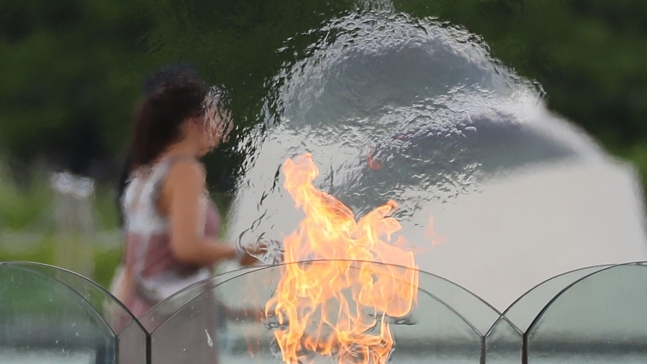Korea reported more heat waves, typhoons in 2010s: study
Yearly temperature inches up 0.5 degree C from three-decade average
By Ock Hyun-juPublished : Feb. 19, 2020 - 15:42

South Korea saw clear signs of climate change in the past decade, with more heat waves and typhoons, a government report showed Wednesday.
The average temperature for the years 2010-2019 was 13 degrees Celsius, 0.5 degree higher than the average over the previous 30 years, according to the Korea Extreme Climate Annual Report 2019 released by the Korea Meteorological Administration.
Hot days were hotter and more frequent, and extreme heat -- when daytime temperatures got as high as 33 degrees Celsius -- affected the country for 15.5 days on average every year during the decade that just ended. The corresponding numbers were 9.4 in the 1980s, 10.9 in the 1990s and 10 in the 2000s, according to the report.
The hottest year of the past decade was 2016, when the average temperature for the year recorded 13.6 degrees Celsius.
But 2018 had the greatest number of extremely hot days and tropical nights. The number of extremely hot days was 31.4 and the number of tropical nights, when overnight lows stayed above 25 degrees Celsius, was 17.7.
The country received less precipitation over the most recent decade -- an average of 1,242 milliliters -- compared with the 1981-2010 period, when it got 1,307.7 milliliters.
Korea saw unusually long and strong cold spells in the early 2010s, torrential rains affected certain regions and prolonged droughts took place between 2015 and 2017, the report said.
Last year also saw signs of changing weather patterns.
Seven typhoons made landfall on the Korean Peninsula in 2019, the highest number recorded in any one year since the compilation of data began in 1904, though the same number also occurred in 1950 and 1959. Three typhoons struck in the fall of 2019 alone.
Typhoon Mitag, the year’s 18th typhoon, hit the southern part of Korea in early October, bringing strong winds and record amounts of rain to Uljin, North Gyeongsang Province. On Oct. 2, Uljin saw 332.9 millimeters of rain.
Korea’s average temperature last year was 13.5 degrees Celsius, the second-hottest for any year since 1973.
In May, the average temperature was 18.6 degrees Celsius, making it the second-highest May on record since 1973. Sunshine duration for the same month amounted to a record-breaking 298.2 hours.
For the months of June through August 2019, the average temperature stood at 28.9 degrees Celsius, 0.5 degrees Celsius higher than the previous 30-year period. The country saw extremely hot weather on 13.3 days and tropical nights for 10.5 days.
(laeticia.ock@heraldcorp.com)
-
Articles by Ock Hyun-ju








![[Today’s K-pop] BTS pop-up event to come to Seoul](http://res.heraldm.com/phpwas/restmb_idxmake.php?idx=644&simg=/content/image/2024/04/17/20240417050734_0.jpg&u=)

![[Graphic News] More Koreans say they plan long-distance trips this year](http://res.heraldm.com/phpwas/restmb_idxmake.php?idx=644&simg=/content/image/2024/04/17/20240417050828_0.gif&u=)






![[KH Explains] Hyundai's full hybrid edge to pay off amid slow transition to pure EVs](http://res.heraldm.com/phpwas/restmb_idxmake.php?idx=652&simg=/content/image/2024/04/18/20240418050645_0.jpg&u=20240419100350)

